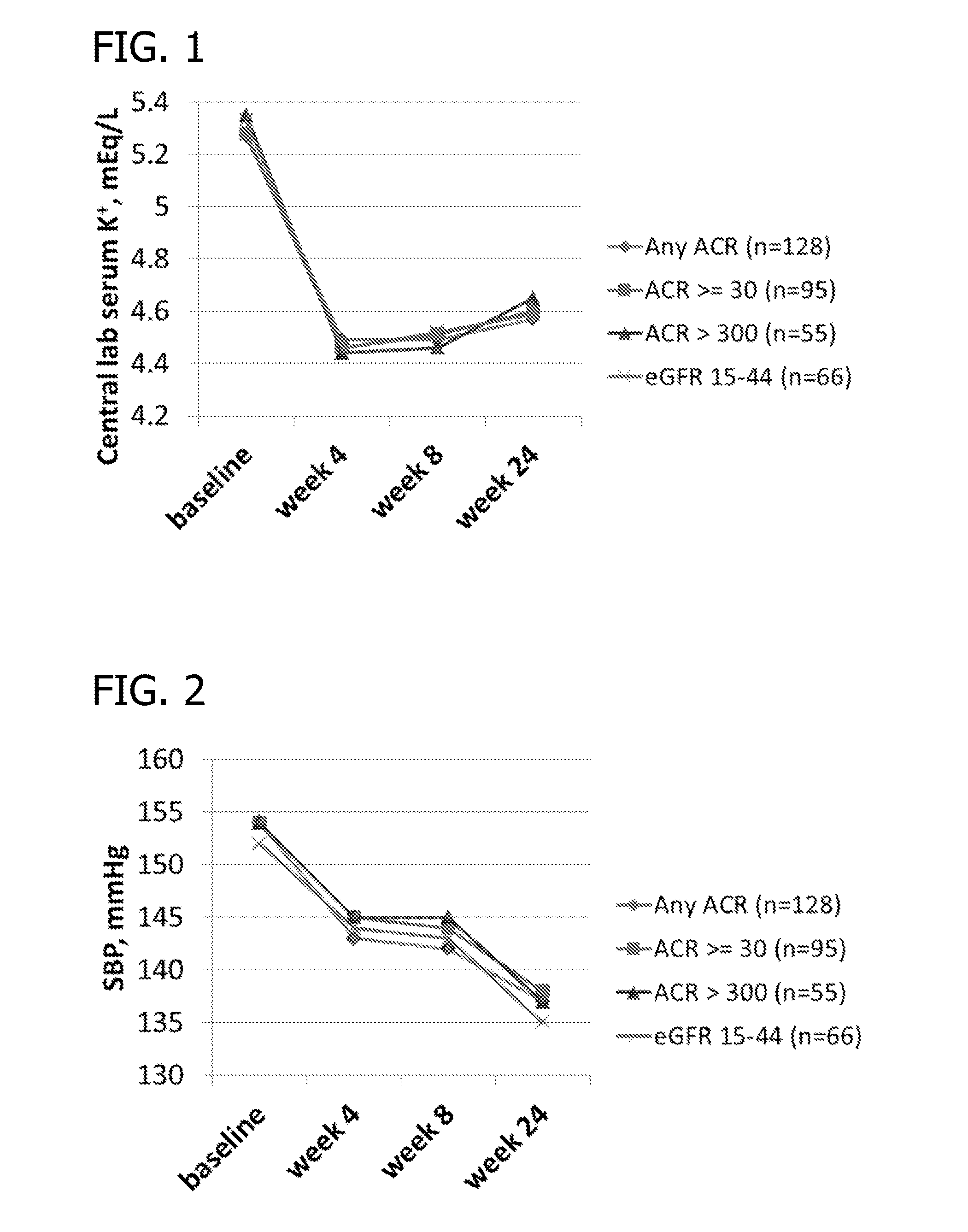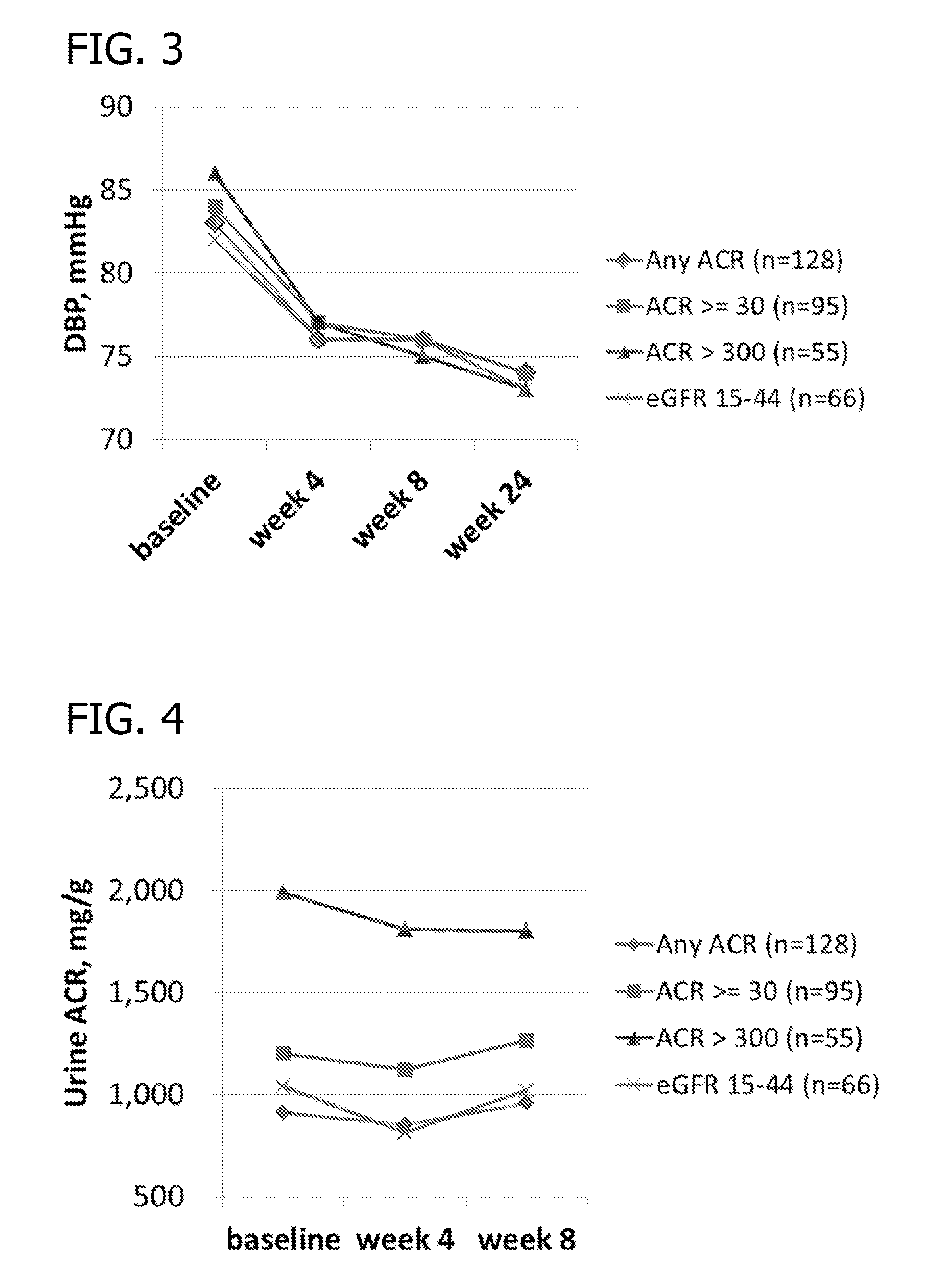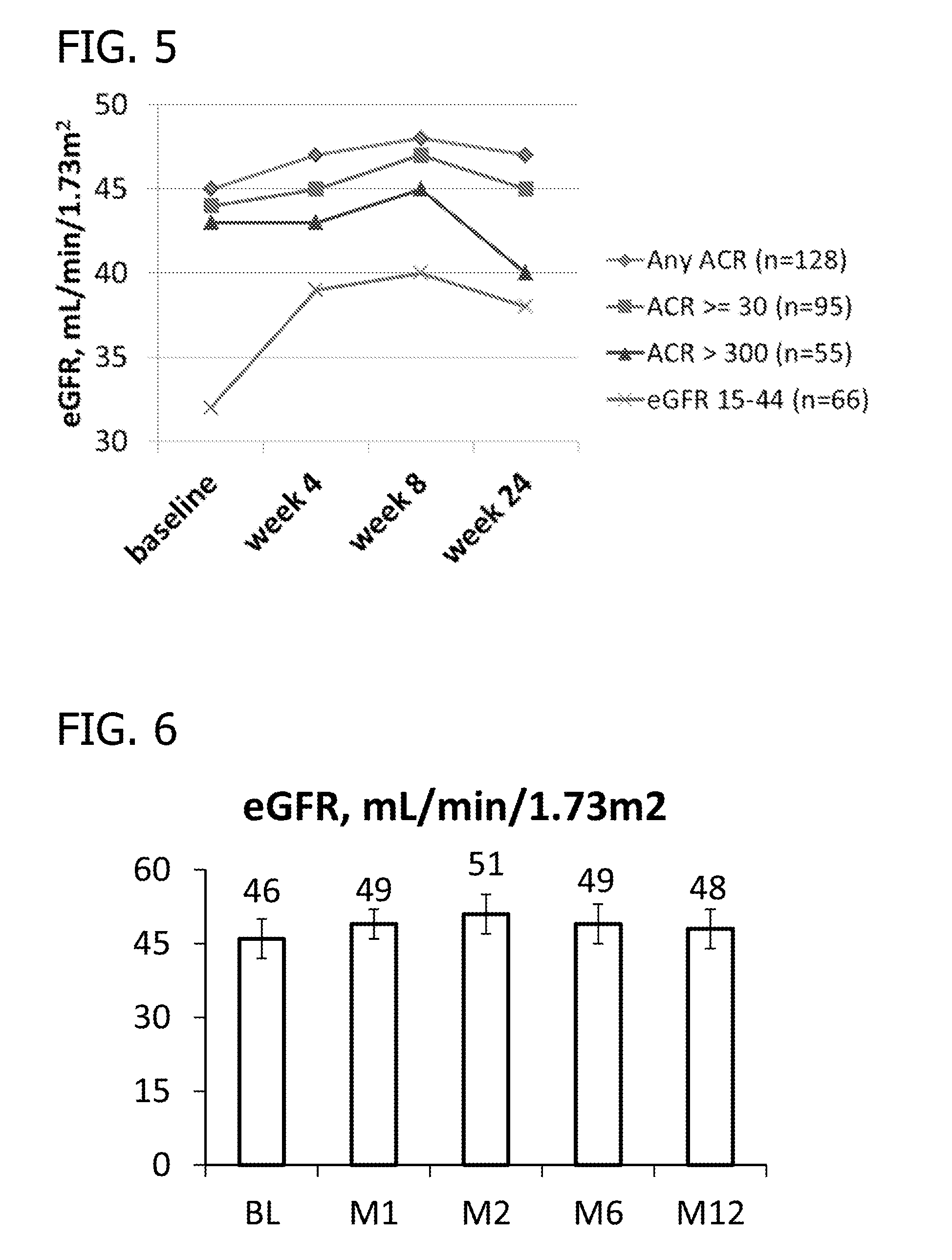Potassium-binding agents for treating hypertension and hyperkalemia
a potassium-binding agent and hyperkalemia technology, applied in the field of potassium-binding agents for treating hypertension and hyperkalemia, can solve the problems of reducing renal function, hyperkalemic event, depriving patients of the benefits of raas inhibitors, etc., to increase or stabilize the patient's kidney function, and increase or stabilize the patient's survival
- Summary
- Abstract
- Description
- Claims
- Application Information
AI Technical Summary
Benefits of technology
Problems solved by technology
Method used
Image
Examples
example 1
Sorbitol-Loaded, Crosslinked (Calcium 2-fluoroacrylate)-divinylbenzene-1,7-octadiene Copolymer
[0199]Methyl 2-fluoroacrylate (MeFA) was purchased and was vacuum distilled before use. Divinylbenzene (DVB) was purchased from Aldrich, technical grade, 80%, mixture of isomers, and was used as received. 1,7-octadiene (ODE), lauroyl peroxide (LPO), polyvinyl alcohol (PVA) (typical molecular weight 85,000-146,000, 87-89% hydrolyzed), sodium chloride (NaCl), sodium phosphate dibasic heptahydrate (Na2HPO4.7H2O) and sodium phosphate monobasic monohydrate (NaH2PO4.H2O) were purchased from commercial sources and used as received.
[0200]In an appropriately sized reactor with appropriate stirring and other equipment, a 90:5:5 weight ratio mixture of organic phase of monomers was prepared by mixing methyl 2-fluoroacrylate, 1,7-octadiene, and divinylbenzene. One-half part of lauroyl peroxide was added as an initiator of the polymerization reaction. A stabilizing aqueous phase was prepared from water,...
example 2
Phase II Clinical Study
[0203]Study Design Overview. The study has two 5016CaS treatment periods: a treatment initiation period for 8 weeks, followed by a long-term maintenance period for an additional 44 weeks which allows treatment with 5016CaS for up to a total of one year (i.e., 52 weeks). Eligible non-hyperkalemic patients start a run-in period of 1 to 4 weeks in duration (Cohorts 1 and 2). Eligible hyperkalemic patients start treatment with 5016CaS immediately (Cohort 3). At the first occurrence of serum potassium (K+)>5.0−<6.0 mEq / L, eligible patients from all three cohorts are assigned to one of two strata according to baseline serum potassium and received 5016CaS treatment at randomly assigned starting doses ranging from 10 to 40 g / day. The dose amount is based on the amount of the polymer anion plus calcium (e.g., on a water and sorbitol free basis). A 10 g dose of polymer anion plus calcium is equivalent to an 8.4 g dose of the polymer anion. The study duration is up to 62...
example 3
Analysis of Systolic Blood Pressure from Phase II Clinical Study
[0218]The following section contains results of the repeated measures analyses of mean systolic blood pressure during the 8-week treatment initiation period of the Phase II Clinical Study disclosed in Example 2. Table 3 through Table 6 present the analyses of mean change from baseline. Tables 3 and 4 present the results for all patients; Tables 5 and 6 present subsets of the analyses according to hyperkalemia status at screening (Cohort 3). In general, patients in Stratum 2 (patients with serum K+>5.5−+>5.0−5.5 mEq / L). Patients in Cohort 3, who entered the study hyperkalemic and did not participate in the run-in phase, contributed to the reduction in mean systolic blood pressure (Tables 5 and 6).
[0219]For Tables 3-6, column header counts include all randomized patients who received RLY5016 (intent-to-treat population) by each randomized starting dose within stratum. The data were derived from a mixed model for repeated ...
PUM
| Property | Measurement | Unit |
|---|---|---|
| mean diameter | aaaaa | aaaaa |
| diameter | aaaaa | aaaaa |
| time | aaaaa | aaaaa |
Abstract
Description
Claims
Application Information
 Login to View More
Login to View More - R&D
- Intellectual Property
- Life Sciences
- Materials
- Tech Scout
- Unparalleled Data Quality
- Higher Quality Content
- 60% Fewer Hallucinations
Browse by: Latest US Patents, China's latest patents, Technical Efficacy Thesaurus, Application Domain, Technology Topic, Popular Technical Reports.
© 2025 PatSnap. All rights reserved.Legal|Privacy policy|Modern Slavery Act Transparency Statement|Sitemap|About US| Contact US: help@patsnap.com



